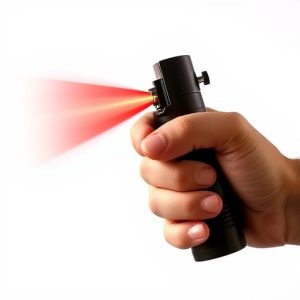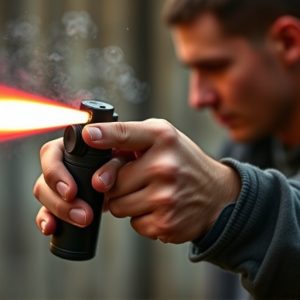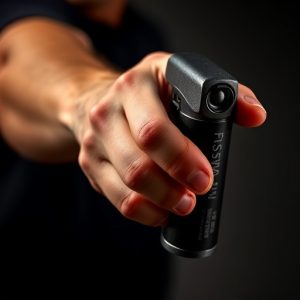Non-Lethal Pepper Spray: Effective Riot Control & Legal Considerations
Non-lethal pepper spray defense, or oleoresin capsicum (OC) spray, is a powerful yet safe tool for i…….
Non-lethal pepper spray defense, or oleoresin capsicum (OC) spray, is a powerful yet safe tool for incapacitating aggressors without causing permanent harm. It irritates eyes, noses, and respiratory systems, leading to temporary blindness, coughing, and disorientation. Used globally for self-defense, crowd control, and riot management, its strategic deployment in today's digital era ensures safe public gatherings in congested areas like city centers and sports stadiums. Guided by strict legal frameworks and responsible usage protocols, these non-lethal pepper spray defenses are crucial for maintaining public safety during civil unrest and challenging circumstances.
“Discover the powerful tool that is the inflammatory riot control spray dispenser, a key component in modern public safety strategies. This comprehensive guide explores non-lethal pepper spray defense, its mechanisms, and role in managing crowd disturbances. We delve into the effectiveness of these devices, their legal standing, and the importance of responsible use. Understanding non-lethal pepper spray is crucial for both law enforcement and citizens seeking effective, safe solutions for self-defense against hostile threats.”
- Understanding Non-Lethal Pepper Spray: A Comprehensive Overview
- The Role of Inflammatory Riot Control Spray Dispensers in Public Safety
- How These Devices Work: Mechanism and Effectiveness
- Legal Considerations and Responsible Use of Pepper Spray Equipment
Understanding Non-Lethal Pepper Spray: A Comprehensive Overview
Non-lethal pepper spray, also known as oleoresin capsicum (OC) spray, is a powerful defense mechanism designed to incapacitate and disrupt potential threats without causing permanent harm. This innovative tool has gained significant attention in law enforcement, security, and personal protection circles due to its ability to subdue aggressors quickly and safely. When deployed, the spray releases a potent compound derived from chili peppers, known for its burning sensation and irritant properties.
The primary function of non-lethal pepper spray defense is to create a temporary yet effective barrier against physical harm. It works by irritating the eyes, nose, and respiratory system of the target individual, leading to coughing, tearing, and temporary blindness. This disorienting effect allows users to escape dangerous situations or gain time to seek assistance. With its fast-acting properties and minimal risk of long-term injury, pepper spray has become a go-to non-lethal force option for self-defense and crowd control in various settings, from public demonstrations to high-risk security operations.
The Role of Inflammatory Riot Control Spray Dispensers in Public Safety
Inflammatory riot control spray dispensers play a pivotal role in maintaining public safety during civil unrest and large-scale gatherings. These non-lethal pepper spray defense mechanisms are designed to quickly subdue and disperse crowds, providing critical time for law enforcement to restore order. The primary function of these devices is to cause temporary blindness, coughing, and difficulty breathing, enabling the swift control of violent or aggressive situations without resorting to lethal force.
In today’s digital era, where live-streamed events can rapidly escalate tensions, the strategic deployment of riot control spray dispensers becomes even more vital. They offer a safe, targeted approach to crowd management, especially in congested areas like city centers and sports stadiums. By utilizing these tools effectively, law enforcement agencies can ensure the safety of both citizens and officers while upholding public order during challenging circumstances.
How These Devices Work: Mechanism and Effectiveness
These innovative devices, often known as non-lethal pepper spray defense systems, utilize a specialized chemical compound to disrupt and incapacitate rioters or aggressors temporarily. The primary active ingredient is typically capsaicin, the same compound that gives chili peppers their heat. When deployed, the spray creates a cloud of fine droplets containing this irritant, which rapidly affects the eyes, nose, and respiratory system upon inhalation. This immediate sensory overload triggers a natural response to cough, tear up, and seek fresh air, effectively neutralizing the target’s ability to continue violent actions.
The effectiveness of these devices lies in their precision and speed. Modern riot control spray dispensers are designed to project the solution with high accuracy, ensuring minimal impact on bystanders. The quick-acting nature of capsaicin means subjects typically experience full incapacitation within seconds to a minute, allowing law enforcement or security personnel to de-escalate the situation safely. This non-lethal approach offers a critical tool for managing public disorder while prioritizing the well-being of both citizens and officers alike.
Legal Considerations and Responsible Use of Pepper Spray Equipment
The legal landscape surrounding non-lethal pepper spray defense equipment varies across jurisdictions, highlighting the importance of understanding local laws and regulations before deployment. In many regions, pepper spray is classified as a less-lethal or non-deadly force tool, allowing law enforcement and security personnel to use it for crowd control, self-defense, or to subdue resistant individuals without causing permanent harm. However, strict guidelines govern its use, ensuring accountability and minimizing potential misuse. Authorities often mandate specific training programs and certifications for officers equipped with these devices, emphasizing responsible and proportionate force application.
Responsible use involves adhering to clear protocol, such as using pepper spray only when necessary for self-defense or to restore order, and ensuring the target is not in a vulnerable state, like medical conditions or advanced age. Misuse or abuse of non-lethal pepper spray can result in severe legal consequences, including civil liabilities and criminal charges. Moreover, proper storage, maintenance, and disposal methods are crucial to prevent unauthorized access and environmental impact. Responsible handling of this equipment is key to maintaining public trust and ensuring the safety of both citizens and officers alike.
Non-lethal pepper spray, or inflammatory riot control spray, has established itself as a valuable tool for public safety agencies worldwide. Its effectiveness in de-escalating situations and controlling crowds is well-documented. The recent advancements in technology have led to the development of innovative devices like inflammatory riot control spray dispensers, enhancing officers’ ability to manage volatile environments. However, it’s crucial to balance these tools’ power with legal considerations and responsible use policies to ensure they serve as a last resort rather than a first response, thereby upholding the principles of community safety and human rights.


